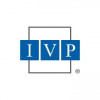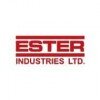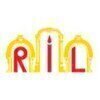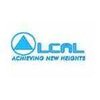Filter interviews by
Bodal Chemicals Trainee Chemical Engineer Interview Questions and Answers
Bodal Chemicals Trainee Chemical Engineer Interview Experiences
1 interview found
I applied via Campus Placement and was interviewed in Feb 2024. There was 1 interview round.
(6 Questions)
- Q1. Introduce your self ,what you learned in internship
- Ans.
I am a recent graduate with a strong academic background in chemical engineering. During my internship, I learned about process optimization, data analysis, and safety protocols.
Learned about process optimization techniques such as heat integration and material balance calculations
Gained experience in data analysis using software like MATLAB and Excel
Understood the importance of following safety protocols in a chemical...
- Q2. Type of reboiler
- Ans.
A reboiler is a heat exchanger used in a distillation column to generate vapor from the liquid feed at the bottom of the column.
Reboilers can be classified into different types such as kettle reboilers, thermosiphon reboilers, and forced circulation reboilers.
The type of reboiler used depends on factors like the properties of the feed, desired product purity, and energy efficiency.
For example, a kettle reboiler is comm...
- Q3. Logarithmic temperature difference ( counter current & co current graph )
- Ans.
Logarithmic temperature difference is used to analyze heat exchangers in counter current and co current flow. Graph shows efficiency vs temperature difference.
Logarithmic temperature difference is a method to analyze heat exchangers in counter current and co current flow
In counter current flow, the temperature difference decreases along the length of the exchanger, resulting in a steeper curve on the graph
In co current...
- Q4. Pump flowrate calculation ( Q= ha
- Ans.
Pump flowrate calculation involves using the formula Q= ha
Calculate the flow rate (Q) by multiplying the head (h) by the area of the pipe (a)
Ensure units are consistent (e.g. meters for head and square meters for area)
Consider factors like friction loss and pump efficiency in the calculation
- Q5. Bernoulli equation
- Q6. Reynold number application
Interview Preparation Tips
- Heat Transfer
- Mass Transfer
- Fluid Mechanics
In heat transfer LMTD, types of reboiler, definition of mass transfer & diffusion, pump flow rate calculation ( Q=av) , Bernoulli equation that's it , if you have average knowledge they'll still hire you bcz they aren't giving exceptionally high salary so don't worry much just prepare best and best of luck ,no need to be nervous
Top trending discussions






Interview questions from similar companies

I applied via Referral and was interviewed before Jun 2023. There was 1 interview round.
(2 Questions)
- Q1. Introduce yourself in brief ?
- Q2. Explain boiler, types of heat transfer, etc ?
- Ans.
Boiler is a closed vessel in which water is heated to produce steam. Types of heat transfer include conduction, convection, and radiation.
Boiler is a closed vessel that uses heat from combustion or electricity to generate steam.
Types of heat transfer in boilers include conduction (direct contact), convection (fluid movement), and radiation (electromagnetic waves).
Examples of boilers include fire-tube boilers, water-tub

I applied via Referral and was interviewed in Apr 2024. There were 5 interview rounds.
(1 Question)
- Q1. Current CTC, ready to relocate
(1 Question)
- Q1. Detail about field work and family members
(1 Question)
- Q1. Technical issue
(1 Question)
- Q1. Technical issue
(1 Question)
- Q1. Salary discussion

I applied via Campus Placement and was interviewed in Mar 2023. There were 5 interview rounds.

Tricky questions from js, sql, c#
(2 Questions)
- Q1. Uses of B Tree
- Ans.
B Trees are used for indexing in databases and file systems.
Used for efficient searching, insertion, and deletion operations in databases.
Helps in maintaining sorted data for quick retrieval.
Commonly used in file systems to store large amounts of data efficiently.
Each node in a B Tree can have multiple children, reducing the height of the tree.
- Q2. What is CTE in sql
- Ans.
CTE stands for Common Table Expression in SQL, used to create temporary result sets that can be referenced within a SELECT, INSERT, UPDATE, or DELETE statement.
CTEs improve readability and maintainability of complex queries
CTEs can be recursive, allowing for hierarchical data querying
CTEs are defined using the WITH keyword followed by the CTE name and query
(2 Questions)
- Q1. Program to reverse a linked list
- Ans.
Reverse a linked list by changing the next pointers of each node to point to the previous node.
Start with three pointers: current, prev, and next.
Iterate through the linked list, updating the next pointers to point to the previous node.
Update prev, current, and next pointers in each iteration until the end of the list is reached.
- Q2. Puzzles from geeksforgeeks
(1 Question)
- Q1. General HR questions like difficulties, strength weakness etc.
Skills evaluated in this interview

I applied via Approached by Company and was interviewed before Sep 2023. There were 3 interview rounds.
(2 Questions)
- Q1. What is your current role?
- Ans.
I am currently working as a Business Analyst at a technology company.
Analyzing business processes and requirements
Creating reports and dashboards for stakeholders
Collaborating with cross-functional teams to gather and analyze data
- Q2. About basic finance
(2 Questions)
- Q1. What is hedge fund?
- Ans.
A hedge fund is an investment fund that pools capital from accredited individuals or institutional investors and invests in a variety of assets.
Hedge funds are typically only available to accredited investors due to their complex and risky nature.
They often use leverage and derivatives to amplify returns.
Hedge funds charge both a management fee and a performance fee based on the fund's profits.
They can invest in a wide...
- Q2. What are derivatives ?
- Ans.
Derivatives are financial instruments whose value is derived from an underlying asset or group of assets.
Derivatives can be used for hedging, speculation, or arbitrage.
Common types of derivatives include options, futures, forwards, and swaps.
Derivatives allow investors to take positions on the price movements of assets without owning the assets themselves.
They are often used to manage risk in financial markets.
Derivati...
(2 Questions)
- Q1. Why do you wan to change?
- Ans.
Seeking new challenges and opportunities for growth.
Desire for professional growth and development
Interest in exploring new industries or sectors
Seeking a more collaborative work environment
Opportunity to work on more impactful projects
Desire for better work-life balance
- Q2. Salary discussion

I applied via Naukri.com and was interviewed in Jul 2021. There was 1 interview round.
Interview Questionnaire
3 Questions
- Q1. Most of questions asked to me were related to my Msc chemistry related questions.
- Q2. I asked my knowledge and ability.
- Q3. I asked about chemical drugs
Interview Preparation Tips

I applied via Naukri.com and was interviewed in Jul 2021. There was 1 interview round.
Interview Questionnaire
3 Questions
- Q1. Most of questions asked to me were related to my Msc chemistry related questions.
- Q2. I asked my knowledge and ability.
- Q3. I asked about chemical drugs
Interview Preparation Tips

I applied via Campus Placement and was interviewed in Sep 2023. There was 1 interview round.
Only DSa and aptitude was asked
Interview Preparation Tips
dene wala toh bhagwan hi hota h.

Associate Software Engineer Interview Questions & Answers
IVP (India)posted on 31 Jul 2024
I applied via Campus Placement and was interviewed in Jul 2024. There were 2 interview rounds.
MCQ round on OOPS (java) , JS, C#, SQL(dbms)
(4 Questions)
- Q1. Two DSA questions , Happy Number (leetcode Q.202) , First Unique character in String (leetcode Q.387)
- Q2. Polymorphism, Function Overloading & Overriding (code), Constructor, Access Specifier
- Q3. Project (about nextjs, diff. b/w next & react, advantage of nextjs, SPA, some discussion about tailwind, miui (library), js)
- Q4. DBMS query of second highest employee , find employeeid of manager whose employee name is 'something' (based on self join & only one table)
- Ans.
Use self join in a DBMS query to find the employeeid of the manager whose employee name is 'something'.
Use a self join on the table to compare employee and manager names
Order the results by employeeid in descending order to get the second highest employee
Select the manager's employeeid where the employee name is 'something'
Interview Preparation Tips
Skills evaluated in this interview

Software Developer Interview Questions & Answers
IVP (India)posted on 13 Aug 2023

(3 Questions)
- Q1. What is arrow function in JS
- Ans.
Arrow functions are a concise way to write functions in JavaScript.
Arrow functions have a shorter syntax compared to regular functions.
They do not have their own 'this' keyword, and instead inherit 'this' from the parent scope.
Arrow functions are best suited for non-method functions, and cannot be used as constructors.
Example: const add = (a, b) => a + b;
- Q2. What is runtime polymerphism
- Ans.
Runtime polymorphism is the ability of a subclass to override a method from its superclass during runtime.
Runtime polymorphism is achieved through method overriding in object-oriented programming.
It allows a subclass to provide a specific implementation of a method that is already defined in its superclass.
The actual method called is determined by the type of object at runtime.
Example: Animal class has a method 'makeSo...
- Q3. What is abstraction in oops
- Ans.
Abstraction in OOP is the concept of hiding complex implementation details and showing only the necessary features to the outside world.
Abstraction allows us to focus on what an object does rather than how it does it
It helps in reducing complexity and improving maintainability of code
Example: A car is an abstraction of various components like engine, wheels, etc. Users interact with the car without needing to know the
DSA questions Reverse the linkedlist
(2 Questions)
- Q1. Explain your project
- Q2. He asked two SQL queries
Skills evaluated in this interview
Bodal Chemicals Interview FAQs
Tell us how to improve this page.
Bodal Chemicals Interviews By Designations
- Bodal Chemicals Senior Engineer Mechanical Interview Questions
- Bodal Chemicals Assistant Engineer Interview Questions
- Bodal Chemicals Chemist Lab Technician Interview Questions
- Bodal Chemicals Trainee Chemical Engineer Interview Questions
- Bodal Chemicals Chemical Engineer Interview Questions
- Bodal Chemicals IT Executive Interview Questions
- Bodal Chemicals Instrument Engineer Interview Questions
- Bodal Chemicals Senior Executive Interview Questions
- Show more
Interview Questions for Popular Designations
- Chemical Engineer Interview Questions
- Diploma Chemical Engineer Interview Questions
- Chemical Process Engineer Interview Questions
- Chemical Plant Operator Interview Questions
- Junior Engineer - Chemical Interview Questions
- Chemist Interview Questions
- Chemical Analyst Interview Questions
- Production Chemist Interview Questions
- Show more
Bodal Chemicals Trainee Chemical Engineer Interview Process
based on 1 interview
Interview experience
Interview Questions from Similar Companies
Bodal Chemicals Trainee Chemical Engineer Reviews and Ratings
based on 1 review
Rating in categories
|
Electrical Engineer
34
salaries
| ₹1.2 L/yr - ₹3.5 L/yr |
|
Plant Operator
28
salaries
| ₹1 L/yr - ₹3 L/yr |
|
QC Chemist
22
salaries
| ₹1.1 L/yr - ₹3.8 L/yr |
|
Assistant Manager
21
salaries
| ₹4.5 L/yr - ₹13.5 L/yr |
|
Instrumentation Technician
21
salaries
| ₹1.6 L/yr - ₹2.4 L/yr |

Gulf Oil Lubricants

Garware Hi-Tech Films

Jubilant Industries

Ester Industries
- Home >
- Interviews >
- Bodal Chemicals Interview Questions >
- Bodal Chemicals Trainee Chemical Engineer Interview Questions










